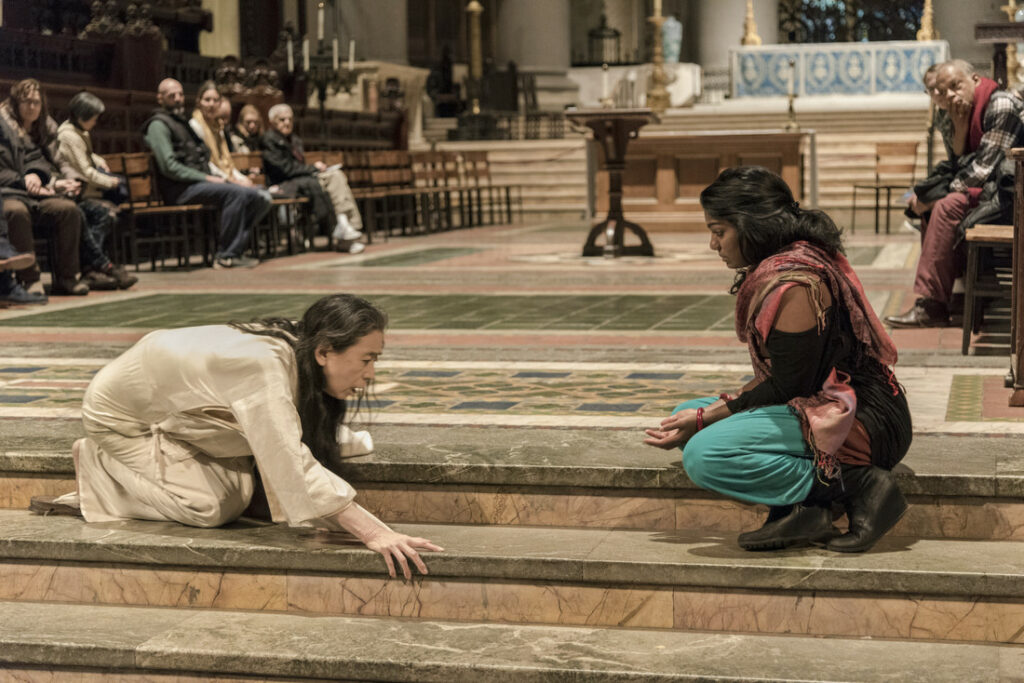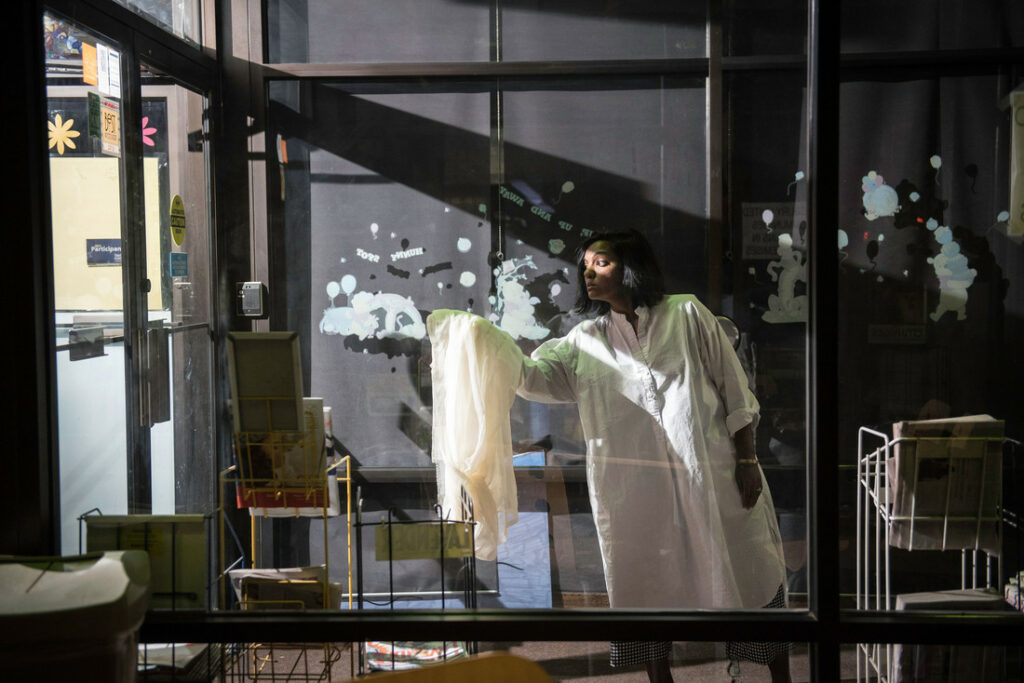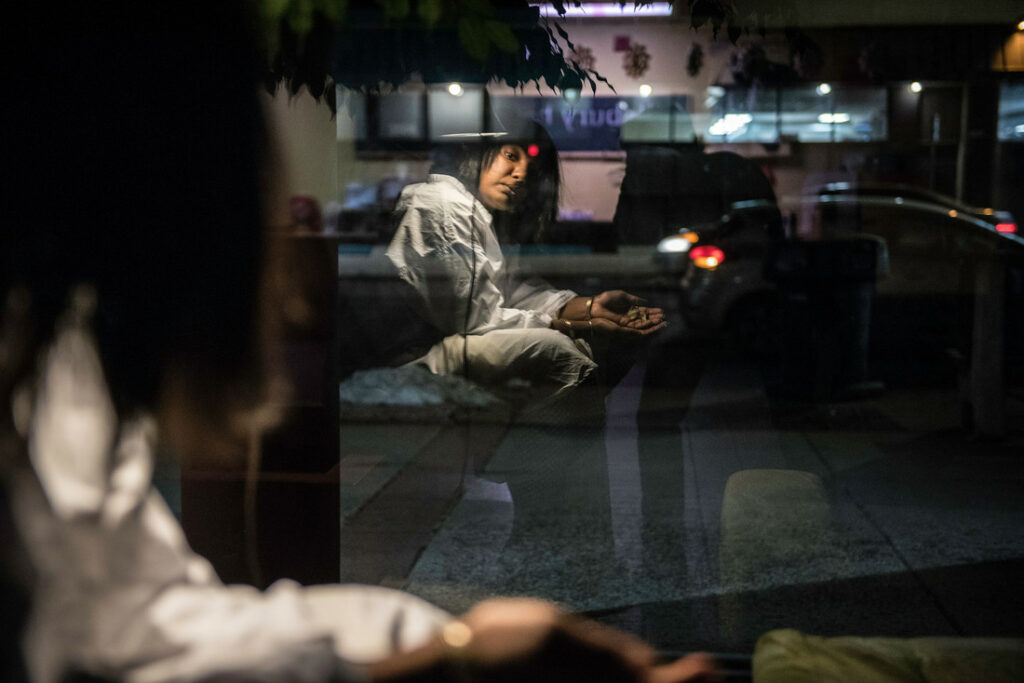Deep Listening: Creating from Memories and Speaking through Dance
Dancer and choreographer Chitra Vairavan offers a blueprint for the decolonized spiritual, as a movement towards reflection, presence, and memory.

I dance to heal myself, and teach/offer dance and movement to help heal others. My liberation is inextricably tied to yours, this land, and all the bodies that came before me. I am never alone in my search, and I trust that energy completely. This piece is me: the dancer and choreographer moving unapologetically towards reflection, presence, memory, and deep listening as decolonized spiritual practice.
While rehearsing with Eiko Otake in November 2016 (as she was in residency at the Cathedral of St. John the Divine in New York for an exhibit on the feminine divine), Eiko repeatedly told me to “stop showing [her] what [I’m] going to do next” in the dance. The echoes of her voice still linger. She encouraged me to keep secrets while dancing. The element of surprise, the shielding of expression, and the process of “unmaking my dance” still resonate from our exchanges together that year. Why should I not reveal in the dance? Is there a problem with transparency?
My interpretation of that prompt, while hearing the fierceness of Eiko’s thought, was to “allow time + space + body to melt together in a loop.” A loop where I lost myself to the performative moment (my embodied choices) so much that my sense of time was unconscious. There was nothing rational guiding me to reveal the next move. In hindsight, l believe that was my ego intellectualizing the process in my dance journal. The journal is often a place of creative reprieve for me to put words to the movement, either through notes, sketches of energy, or other inspiration to mark for memory. Honestly, I did not fully comprehend what Eiko meant at the time, and perhaps I am still “unmaking my dance” now, but her guidance still whispers as I creatively flow today. Some working memories will always remain.

The mystery of the non-reveal is also a preservation of spontaneity and impulse in the movement. There is magic in the moment when we align with our spirit, through deep practices of listening to our environment and the unconscious flow of that presence over time. This may be a language only dancers and performers speak. I see it spoken in Eiko’s incredible work and thinking. This is the process I continue to manifest and engage in as I create. The choice of deep listening while performing especially seeped into my work in January 2019 when I created cloth and body for my Naked Stages Fellowship.

The decolonized spiritual
What I mean by the decolonized spiritual in artistic work is an undeniable connection to the spirit through deep listening, and an emphasis on expansion of the imagination within the performed moment. In my experience, when listening to each nuance a chosen environment offers, you allow for a meeting of worlds in the performance. A layered narrative. The first and second floors of Pillsbury House + Theatre were my narrative as I created cloth and body over a two-hour period during sunset. The lighting of the sky’s shift at dusk provided the proper canvas for the movement exploration. The meeting of worlds is an expansion of possibilities in the visioning; it goes beyond the repetition and replication of a rehearsed moment. There is a deep listening and acknowledgement of the present moment that guides the choices and embodied responses.
In many ways, my creative liberation practice (offered through my workshops) explores this process deeply. No one interprets the prompts and creative seeds in one way, so there is no room for comparison and competition within the process. No one is compared to another and no person makes the same choices. This notion allows the form to not be replicated—to not be commoditized or even exchanged in a training process. It’s intuitive, organic and unique to each artist and moment. Abundance lives within the practice when we create this way. Another acknowledgement of the creative liberation practice is that the work lives beyond the performed/shared moment, and also in memory, energetic connection, and the imagination invoked in others who witness. There is generosity in revealing a powerful practice for others to receive, unpack and reflect on their own time, just as Eiko did for me five years ago—and perhaps I am revealing for you, through these words. The love is in the giving and investing of yourself in others, through presence in this time-space.

This piece is part of the series by guest editor Sun Yung Shin.